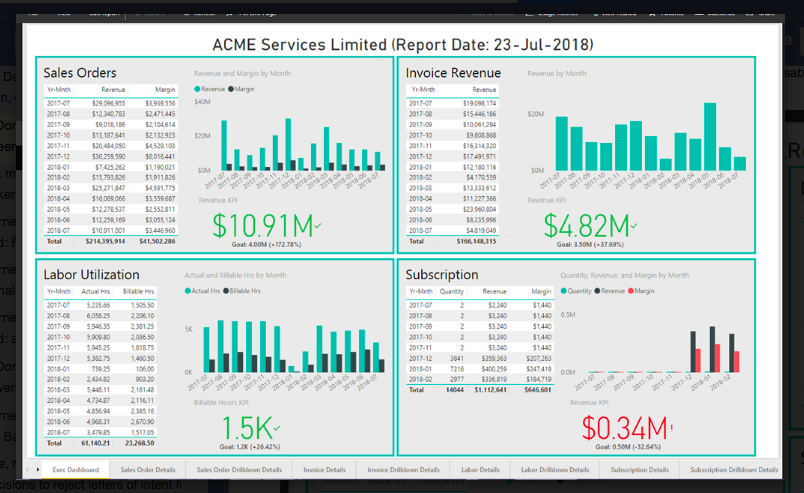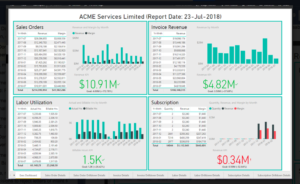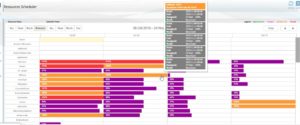
Secrets of Utilization - 3 Choices
For Managed Service Providers (MSP) and Systems Integrators (SI), a large portion of their profit comes from services revenue. A major factor affecting profit is Labor Utilization optimization. This article points out the choices MSPs or SIs have when deciding how they manage utilization.
Two key drivers affecting choice are: 1) the size of the company; and 2) the maturityof their best processes. Another factor to consider is how the MSP or SI track customer profitability and how cash flow is managed.

First, consider a few key guiding principles that the top performing companies use to manage their resources.
Labor as Inventory
Here is an important concept. Think of labor as inventory. You control access to inventory, account for every box and sell excess before you have to throw them away. So if labor is inventory, you need an inventory control person(s) (coordinator) and an inventory control system (work order) that tracks all hours in a day. By tracking labor details, you can see where it is consumed (billable, non-billable, pre-sales, training, administration etc.) This leads to better decision-making and dramatically improved resource optimization.
Tracking Utilization
Highly profitable service business moves beyond Excel and accounting systems as the prime source of data. The former cannot give you fast, consolidated reporting, and the latter can’t forecast capacity planning. Leading companies incorporate activity-based, key indicators to accurately and easily see utilization projections and track results. Successful companies are excellent at tracking billable utilization, average billing rates and labor forecasts. “If you can’t measure it, you can’t manage it.”
Now let’s look at the 3 methods companies chose to manage their labor resources.
Adhoc Assignment & Time Sheets
This is most common in companies under 20 employees. Resources (or techs) generally manage their own appointment calendar and work requests are in the form of emails, verbal or other informal tracking system. The actual work is recorded at the end of the week, or month, by the resource filling in a time sheet that is printed or emailed to a manager …who passes it to accounting for payroll and customer billing.
Pros Cons
| Convenient for Resources | Limited forward capacity planning |
| Requires less management oversight & schedule coordination | Resources forget to record additional work from onsite extras |
| Process delays billing by 2-4 weeks | |
| Work is recorded as complete days after |
Block Assignments
Resources are given a set of hours (or days). They schedule the work directly with a customer and an expected end date or start date. This is typically useful where a resource has a close, continuous working relationship with a customer. Also where monthly, managed services are performed and date of each event is not important. Time sheets or a project tracking system is used but work completion is recorded at the end of the week or end of the project. Block assignments are used in combination with the Adhoc or Resource Scheduler methods.
Pros Cons
| Flexibility for Resource to juggle multiple assigned projects | When time sheets are used it has similar drawbacks to Adhoc assignments |
| Customer likes direct contact with “his/her” resource like their own extended employee | Resources forget to include additional work for onsite extras and billing is done at the end of the project assignment |
Resource Schedule
Most common with larger companies or ones with more developed processes. They treat billable resources like inventory, where an inventory clerk records and counts all transactions. Every potential hour of labor (160 in a month) is scheduled, tracked and analyzed. Resources may have some flexibility but it is under the watchful eye of a resource coordinator(s)
Pros Con
| Utilization is accurately forecasted out 3-4 months so the company has many weeks notice to fix a projected shortfall | Initially a difficult adjustment of new work habits and managing of Resources. |
| Assignments are closed on the same day and billing is expedited by 2-3 weeks, improving cash flow | Requires much more coordination and a fulltime or part-time resource scheduler |
| Lost billing hours from scope of work increases are significantly reduced |

Differences between MSP’s and SI’s
SI work is project-based so it is critical to see the projected workflow from the quoting process through to the scheduled work. Project-based work ebbs and flows, impacted partly by the timing of sales orders. Utilization projections have to integrate scheduled work, sold but unscheduled work and projected future sales workload requirements. SI’s need to use historical results to determine forecast KPI’s. For example, your history may show that a forecast of 3 months (30 days out) of 75%, 50% and 25% respectively is a good pipeline of booked business that ends in an overall average 80% utilization. If those KPI’s are below your target you have time and 2 options to fix the future: 1) look for sales that you can close earlier; 2) plan to reduce operating expenses in the shortfall months.
MSP’s are working in an environment where they have a 12-month inventory of work to support their contracts. Workloads are generally more predictable. Their challenge is to accurately quote and then track the time that resources work on any contract. When labor is quoted & tracked as a single bulk estimate it is a struggle to determine which contracts are profitable and which are losers.
A practice of item quoting and subsequent work assignment tracking is key. Item quoting identifies a specific task and estimates the number of times they occur in a period. For example, you expect to do a minor server patch once a week at ½ hour per patch, or 52 patches a year at a cost of 26 hours per year. Add a major patch 4 times in a year at 3 hours per patch. When quoted this way and when labor assignments are accurately tracked it is easier to sort good contracts from bad.
Can managed service contracts achieve a 100% plus utilization? With the help of item quoting and good scheduling a Resource can compete with their own record. If a tech completed 50 minor patches in 25 hours in previous months, consider whether can they be inspired to get it down to 20 hours. This is only achievable if they have the statistical tracking to self-assess their performance. “Measuring is managing!”
Summary
- A service-based business can be profitable despite not following every best practice.
- Successful businesses grow and evolve but success comes from setting benchmarks, acting now and having a willingness to make changes outside your comfort zone.
- A service practice that looks forward with strong utilization forecasts can change a bad outcome into a profitable one, thus avoiding the roller coaster ride of monthly profits and losses
- Labor service under billing is a problem in almost every SI or MSP. The average leakage is between 5-10% (or $100,000 on every $1m in billing). Until you know how bad the problem is you don’t think it needs to be fixed and set as a priority.
Motivated to change your outcomes? Want some help? Contact us so we can share our knowledge and tools or get a referral to one of our 3rd party business process consultants who specialize in MSP & SI optimization.
Learn more about how Promys can help your business at https://promys.com/reconnect/
Author: John Breakey mailto:jbreakey@promys.com

